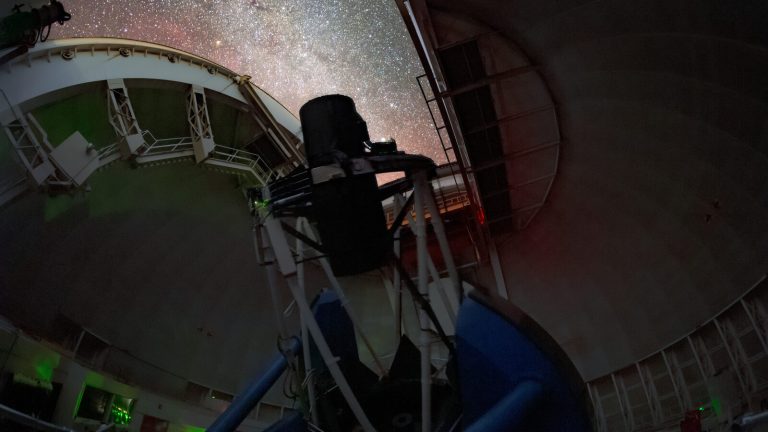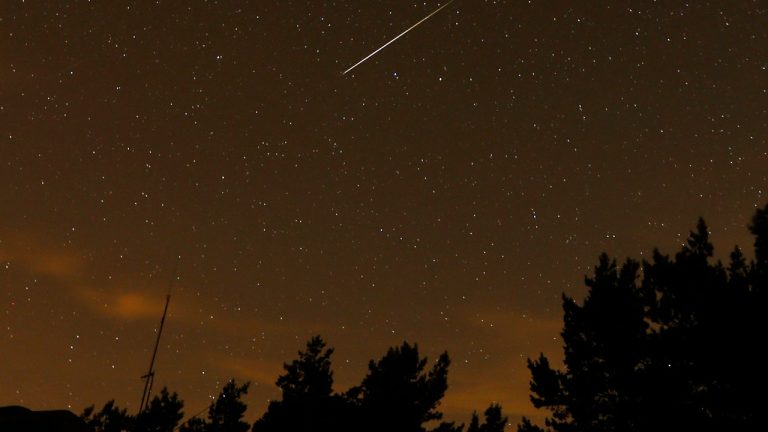
To study some of the smallest things in the universe, particle physicists use some of the biggest experimental equipment on the planet: The Large Hadron Collider, which has a circumference of about 17 miles, for example, doesn’t exactly fit on a lab bench. But researchers have limited time and money to build such projects, which means they must prioritize their efforts.
With this goal in mind, the 2023 Particle Physics Project Prioritization Panel, or P5, released a report outlining a long-term strategy for US spending in the coming decade of particle physics research.
One of the most forward-looking recommendations of the report is to invest in research and development toward “a 10 TeV parton center-of-momentum … collider to search for direct evidence and quantum imprints of new physics at unprecedented energies.”
In a particle accelerator, 10 tera electronvolts, or “10 TeV,” is a measure of energy, and “parton center-of-momentum” (or “parton center-of-mass”) refers to the energy of the elementary particles inside the accelerator—such as quarks or leptons—as they collide. A 10-TeV pCM collider is equivalent to a 100-TeV proton collider, for example, because protons are composite particles, and each constituent of the proton carries about 1/10th of the total energy.
The higher the energy in a particle collision, the larger the variety of particles that collision can produce. The current highest energy collider is the LHC, which is a 13-TeV proton collider, meaning it has a maximum parton center-of-momentum energy of around 1 to 2 TeV.
“Because we haven’t seen them before, hypothetical new particles must be at higher masses than what the current universe has given us access to, and a 10-TeV collider lets us go to those really high energy scales in a controlled lab environment,” says Julie Gonski, an early-career scientist at SLAC who took part in the community planning process that led up to P5. “I think the shortest way to describe it is: This is our discovery machine.”
Such a discovery machine would be a project for the physicists of the 2040s or beyond. It would come online long after the high-luminosity upgrade of the LHC, which is already in the works. It could be built after or in tandem with one of the committee’s top priorities for the near-term future: a collider designed for the in-depth study of the Higgs boson, such as the proposed Future Circular Collider at CERN or the proposed International Linear Collider in Japan. It would use technology so cutting-edge that it currently does not exist.
And that’s why physicists want to plan for it now. To build the discovery machine of the future, researchers must develop new technology today.
The P5 report recommends advancing accelerator R&D toward three possible types of colliders that might be able to access the desired energy range: proton-proton, muon, or plasma-wakefield. “All three of these technologies have different appealing features and must be developed further,” the report states.
Proton-proton collider
A future proton-proton collider would use technology similar to that of existing circular colliders, which accelerate particles to higher and higher energies across long distances. But to reach 10-TeV parton center-of-mass, such a collider would need to operate with 100-TeV proton collisions. It would be even longer than the LHC, and it would require magnets more powerful but less expensive than the ones that currently exist.
CERN has a proposal for such a proton-proton accelerator in its FCC program. CERN is three years into its study of the feasibility of the FCC, which is envisioned as an underground tunnel with a circumference of 90.7 kilometers, or about 56 miles.
CERN refers to the first stage of the FCC as the FCC-ee, to communicate that the FCC would initially collide beams of electrons and positrons. These particles, categorized as leptons, are almost massless, pointlike particles, whereas protons are more massive, composite particles. Lepton collisions are cleaner—good for the precision studies physicists envision for a Higgs factory—but protons can be accelerated to a higher energy than leptons in the same circular tunnel.
That’s why CERN has proposed reusing the tunnel for the FCC-ee to build a follow-on proton-proton collider, the FCC-hh (the ‘h’ is for hadron). Building the FCC-ee would be a significant challenge, but building the FCC-hh would be an even greater one. To accelerate protons in a ring at the target center-of-mass energy of 100 TeV would require using advanced superconducting magnets to produce huge magnetic fields. As the P5 report explains, the FCC-hh “design requires magnet technology that is currently beyond the state of the art. A multi-decade, international R&D program is essential to produce magnets meeting the necessary specifications.”
The US is already involved in such efforts, via the US Magnet Development Program, supported by OHEP, and the National High Magnetic Field Lab, supported by NSF.
Muon collider
Another possibility, which the P5 panel envisions potentially being built in the United States, is a muon collider.
One of the challenges with accelerating charged particles, such as electrons, around a circular path is that they emit radiation, losing energy as they travel. Muons, on the other hand, are much heavier than electrons, to the point that the energy they would lose from this radiation would be negligible. This means a circular muon collider could be smaller than an electron collider but reach the same energy.
The idea to build such a collider has likely been around since at least the 1960s. The problem, says Tor Raubenheimer, a professor at SLAC National Accelerator Laboratory and a member of P5, is that “people didn’t know how to do it.”
Over the past few decades, however, scientists in the US and Europe have continued to research the concept, and many think the community is close to figuring it out. “There are many complicated systems that will all have to work together, but each individual piece looks like it’s probably possible to do,” Raubenheimer says.
One design for such a collider, built into the existing accelerator complex at Fermi National Accelerator Laboratory, is already in the works. “This R&D along with engineering design work before the end of the decade would produce a fully costed conceptual design for a demonstrator facility, which a future panel can consider for construction,” the report states.
Plasma-wakefield collider
Similar to a muon collider, a plasma-wakefield collider is an attractive option because of its large acceleration potential within a small footprint.
The FCC-hh and the muon collider would both use existing radio-frequency technology. In such an accelerator, particles travel through a long, hollow tube, separated into charged radio-frequency cavities. In each charged cavity, the particle receives an accelerating kick. The farther the particles travel, the more energetic they become.
In a plasma-wakefield accelerator, on the other hand, particles would travel through a plasma, a state of matter made up of positively and negatively charged particles. They would receive their accelerating kicks from a carefully generated wake, an electromagnetic wave flowing through the plasma.
Plasma-wakefield acceleration can be driven by a laser or by a beam of electrons, positrons or protons. So far, all of these options are in contention as the field works to develop a consistent, effective, efficient way to accelerate particles.
“The challenge of plasma accelerators is really the stability and the ability to preserve the beam quality, and have consistent beam parameters,” Raubenheimer says. “There’s a lot of work that people have to do to try and figure out how to make the system work and how to design a system that can put all the pieces together.”
Next steps
The P5 panel did not want the US particle physics community to have to wait until its next community planning process, which could happen a decade from now, to take its next steps toward a future 10-TeV parton center-of-mass collider. That is one reason it recommended convening a new expert panel, perhaps around the halfway point, to launch projects including test and demonstrator facilities toward a future collider.
Even if the community decides to pivot away from a particular technology, the R&D up to that point will enable advancement in our understanding of particle acceleration. “We have a very exciting evolution in acceleration technology that puts us in a position to both meet the needs of particle physics, and also to impact broad science,” says Cameron Guy Robinson Geddes, director of the Accelerator Technology and Applied Physics Division at Lawrence Berkeley National Laboratory and a member of P5.
And the effort won’t just happen in the United States. The P5 report recommends this R&D take place in cooperation with researchers around the world.
Gonski says she sees the P5 objectives as opportunities to more fully engage researchers around the globe in international basic research efforts, particularly in regions that have not participated in the past. “The Middle East and Africa, for example, are places that I think are huge frontiers in terms of genius where new people can step in and make these lofty goals realizable.”
She says the fact that the physics community likely won’t reach these goals for at least a couple of decades doesn’t dampen her interest in striving for them. Rather, she says, “it’s a humble reminder that we’re all just pieces of a massive machine doing this incredible job of understanding how the universe works.”







